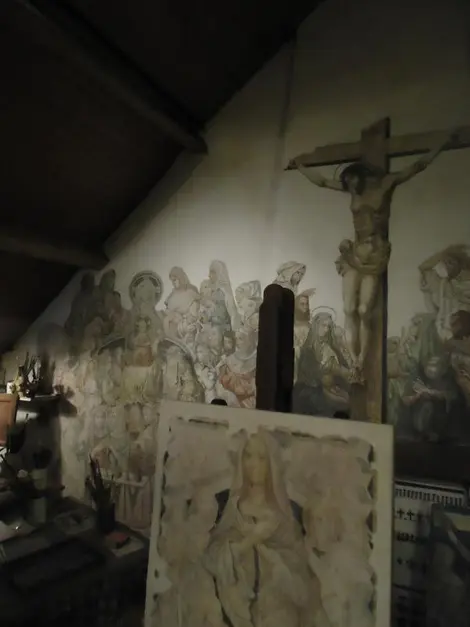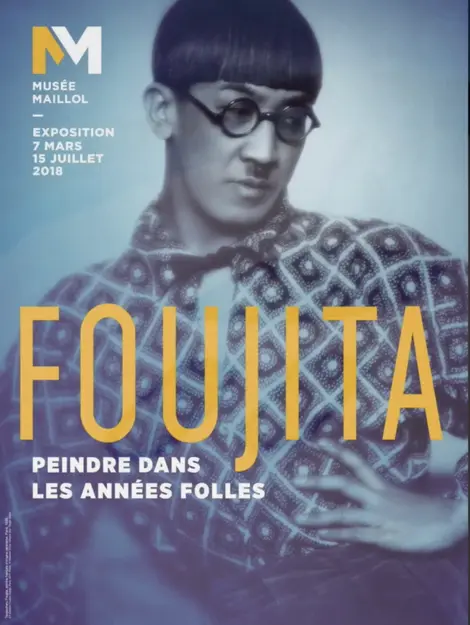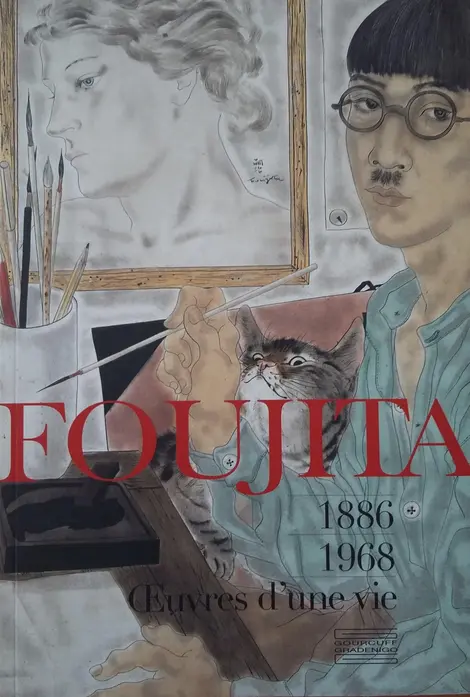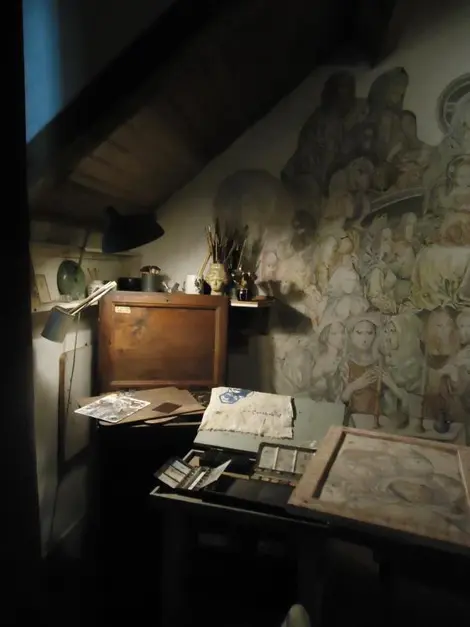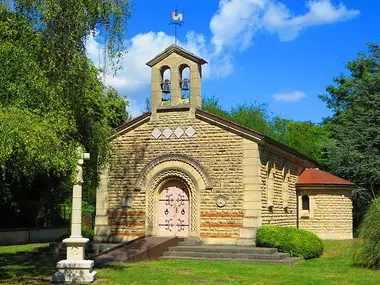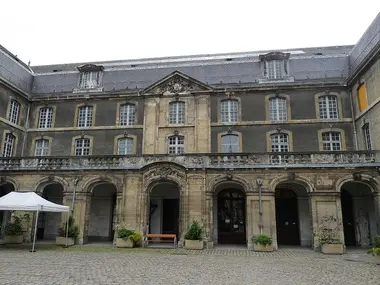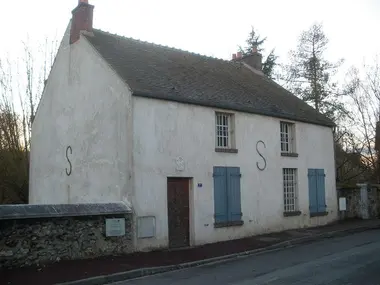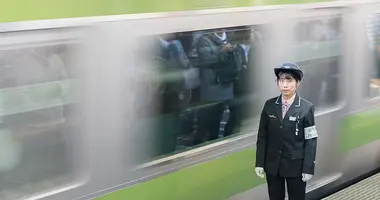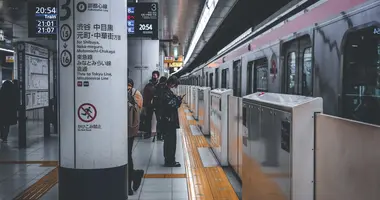The life and works of Tsuguharu Foujita, also known as Léonard Foujita 藤田 嗣治
Discover Foujita and its relationship with France
Tsuguharu Foujita, born in Tokyo in 1886, is a unique Japanese artist. This renowned painter of the School of Paris with abundant works spent more than half of his life in France. Naturalized French citizen in 1955, he left an unclassifiable body of work; the subtle blend between his Japanese roots and modern European art.
Foujita's relationship with France
Trained at the School of Fine Arts in Tokyo where he followed the teaching of master Seiki Kuroda, Tsuguharu Foujita moved to Paris in August 1913 where he rubbed shoulders with Modigliani, Picasso, Van Dongen, and Soutine. This Parisian artistic avant-garde of foreign origin constituted what would later be called the School of Paris. In April 1918, he fled Paris in the grip of aerial bombardments for the Côte d'Azur. He lived for a while with Modigliani and Soutine in Cagnes-sur-Mer then moved with his wife, the painter Fernande Barrey, to Villeneuve-lès-Avignon.
The beginning of the following decade is for him synonymous with critical and commercial recognition. Back in the capital, this extravagant Japanese dandy becomes the darling of all of Paris. Unfortunately, this fame will only be short-lived and will gradually fade over the years. In 1929, ruined by the economic crisis and the tax administration, Foujita returned to Japan with his new wife, Lucie Badoud nicknamed Youki.
Travels around the world
Seized with an insatiable taste for travel and separated from Youki, he began a long journey in South America between 1931 and 1933 and then did the same throughout the archipelago. He was called up to the Imperial Japanese Army in 1937 to serve as a war painter. During the Second World War, he followed Japanese troops in their military operations in China, Southeast Asia, and the Pacific Islands and painted the battles that took place there.
In 1949, he left Japan for the United States and settled in New York for a year. At the beginning of 1950, he returned to France with Kimiyo Horyuchi, whom he married in 1938. This return to France was final. He will never return to Japan again.
Léonard Foujita, a new life in France
In 1955, he and his wife were naturalized French. The last part of his life and work is marked by a new faith. The couple converted to Catholicism in October 1959 during a baptismal ceremony at Reims Cathedral. Foujita, who had already chosen to renounce his Japanese nationality a few years earlier, will also give up his first name. He is now called Leonardo in homage to Leonardo da Vinci.
His religious paintings earned him an audience with Pope John XXII in Rome in April 1960 and the gold medal at the "1st Sacred Art Exhibition" the following year. He now lives and works in his home workshop in Villiers-le-Bâcle in Essonne.
From 1965, he devoted himself fully to a monumental and total work: the Notre-Dame de la Paix chapel in Reims. He designed the architecture and decoration (frescoes, ironwork, stained glass) of this chapel for peace. Inaugurated in October 1966, the "Foujita chapel" was donated to the city of Reims in 1967. The painter died on January 29, 1968, in Zurich.
The singular style of Léonard Foujita
Thanks to his singular art, at the crossroads between traditional Japanese art and Western masters, Foujita knew how to cross the great modernist currents of the beginning of the 20th century; fauvism, cubism, surrealism.
In 60 years of creation, he brilliantly and delicately depicted the Paris of the 1920s, landscapes and scenes from the Far East and South America, still lifes, the battlefields of the Second World War, like the holy texts of Catholicism.
Her diaphanous silhouettes on almost transparent backgrounds made her famous.
Where to see the works of Foujita Léonard?
If his works have entered the collections of Japanese museums (Akita Art Museum, National Museum of Modern Art in Tokyo, etc.) and French (Centre Pompidou, Museum of Modern Art of the City of Paris, Château -Grimaldi museum in Cagnes-sur-Mer, etc.), know that it is also possible to visit three places in France intimately linked to the life and work of the painter.
The Museum of Fine Arts of Reims
Between 2013 and 2014, the heirs of Kimiyo Foujita (1886-1968) bequeathed more than 2,300 works (paintings, tempera on wood, art objects, stained glass windows, drawings, prints) to the Musée des Beaux-Arts de Reims. At the time, part of this legacy was exhibited as part of an exhibition commemorating the 100 years of the museum and retracing its history.
Since then, an entire room in the museum housed in the buildings of the former Saint-Denis abbey has presented Foujita's major works.
Address : 8 rue Chanzy - 51100 Reims
Telephone : 03 26 35 36 00
Opening hours: Open every day from 10 am to 12 pm and from 2 pm to 6 pm. Closed on Tuesdays and on January 1, May 1, November 1, and December 25.
Access: by bus - lines 2, 4, and 5 - Opéra stop; by tram - lines A and B - Opéra stop
Price: €5 (combined ticket for the Fine Arts Museum and the Foujita Chapel)
The Chapel of Our Lady of Peace
Thanks to the patronage of his friend and baptismal godfather, René Lalou, president of the Reims champagne house Mumm, Foujita had a Romanesque-style chapel built in which he produced monumental frescoes inspired by the Italian Renaissance.
The painter and his wife Kimiyo, who died in 2009, are buried in the Notre Dame de la Paix chapel.
Address : 33 rue du Champ de Mars - 51100 Reims
Telephone : 03 26 35 36 00
Opening hours: Open every day from 10 am to 12 pm and 2 pm to 6 pm from May 2 to September 30. Closed on Tuesdays.
Access: by bus - line 7 - Foujita stop; by tram - lines A and B - Schneiter stop
Price: €5/$5.75 (combined ticket for the Fine Arts Museum and the Foujita Chapel)
The house studio, in the privacy of the painter
Since 2000, Foujita's last house workshop, donated to the Essonne department by his widow in 1991, has been open to the public as a center for studies on Foujita. This rural house acquired in 1960 served as the artist's studio until he died in 1968.
Restored and presented identically during Foujita's lifetime, the residence allows the visitor to enter the painter's intimacy.
Address : 7, route de Gif 91 190 Villiers-le-Bâcle.
Telephone : 01.69.85.34.65.
Opening hours: Usual opening on Saturdays from 2 pm to 5 pm and Sundays from 10 am to 12:30 pm and from 2 pm to 5:30 pm. Visits by appointment during the week on Wednesday and Friday mornings.
Price: Free admission.






